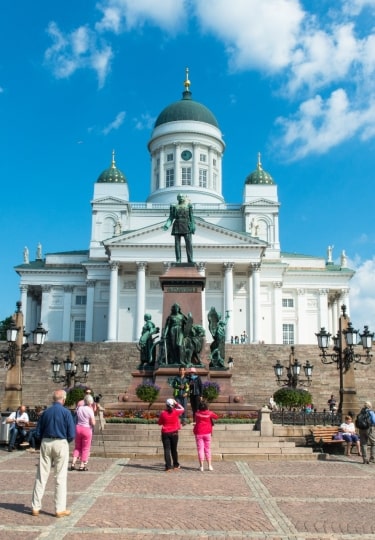Regularly topping the rankings of the “happiest country in the world,” one of the most obvious answers to what is Finland known for would be the high quality of life its citizens enjoy.
Thankfully, much of what puts a smile on a Finn’s face isn’t reserved solely for the locals, with the nation’s pure air, unsullied forests, and walkable cities being some of this Nordic nation’s main draws for visitors.
But what is Finland famous for beyond this lauded lifestyle? Read on to discover more about Finnish culture and the country’s global contributions, from technological innovations and sauna sessions to seafood and summer celebrations.
Helsinki’s Senate Square
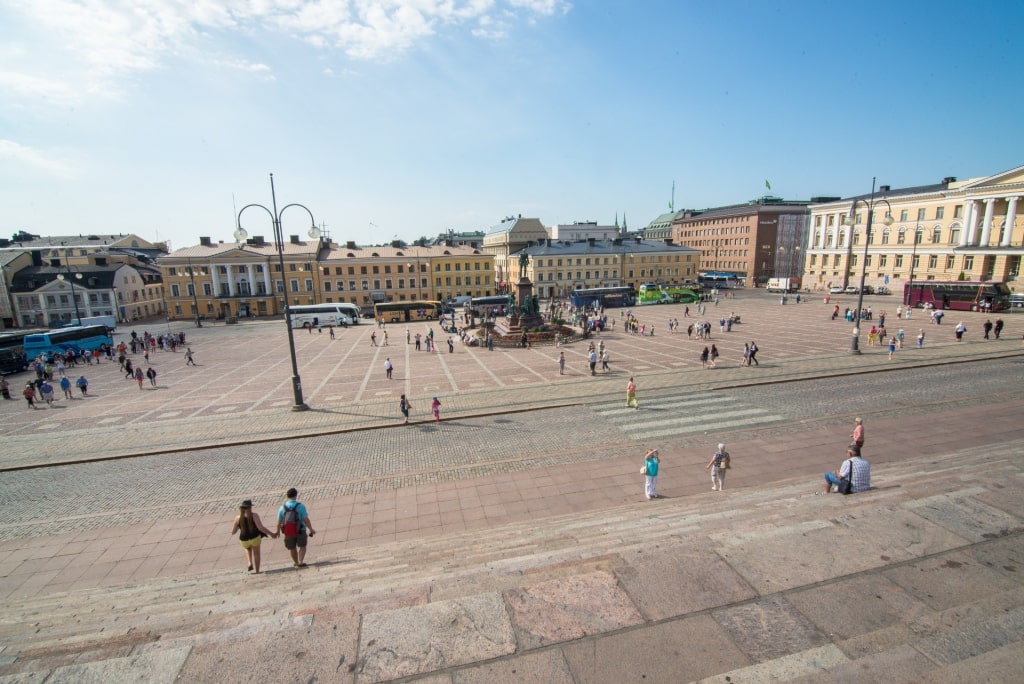
Senate Square, Helsinki
Helsinki, Finland’s calm and coastal capital city, is the country’s most visited destination. However, it also provides a somewhat unexpected answer to what Finland is known for: the work of German architect Carl Ludvig Engel.
Senaatintori, or Senate Square, is the country’s most recognizable urban landmark flanked by four of Helsinki’s most famous neoclassical buildings, all designed by the prolific architect in the 1800s.
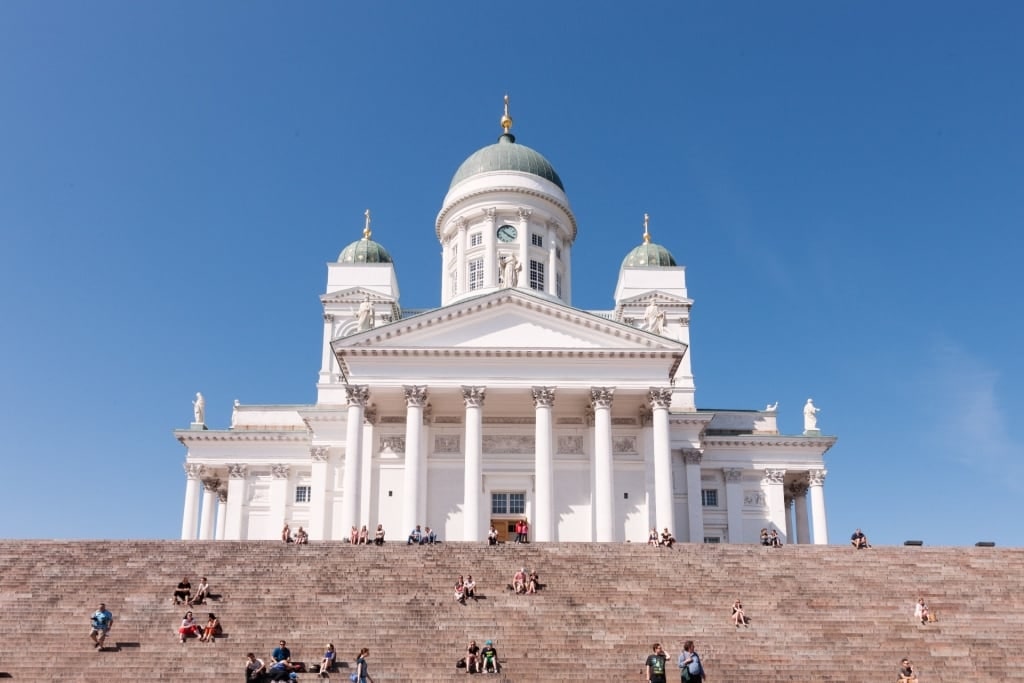
Helsinki Cathedral
The most iconic, dome-capped Helsinki Cathedral is the star of the city’s skyline. Almost presidential in appearance, the symmetrical, white, and colonnaded edifice is striking, though its orthodox interior is far more understated.
Engel’s other three legacy designs are the Government Palace, sadly closed to the public, the University of Helsinki, and the not-to-be-missed National Library of Finland. For both bibliophiles and admirers of architecture, the frescoed ceilings and stucco columns of the reading rooms—home to three million books—are an unforgettable sight.
Islands & Archipelagos
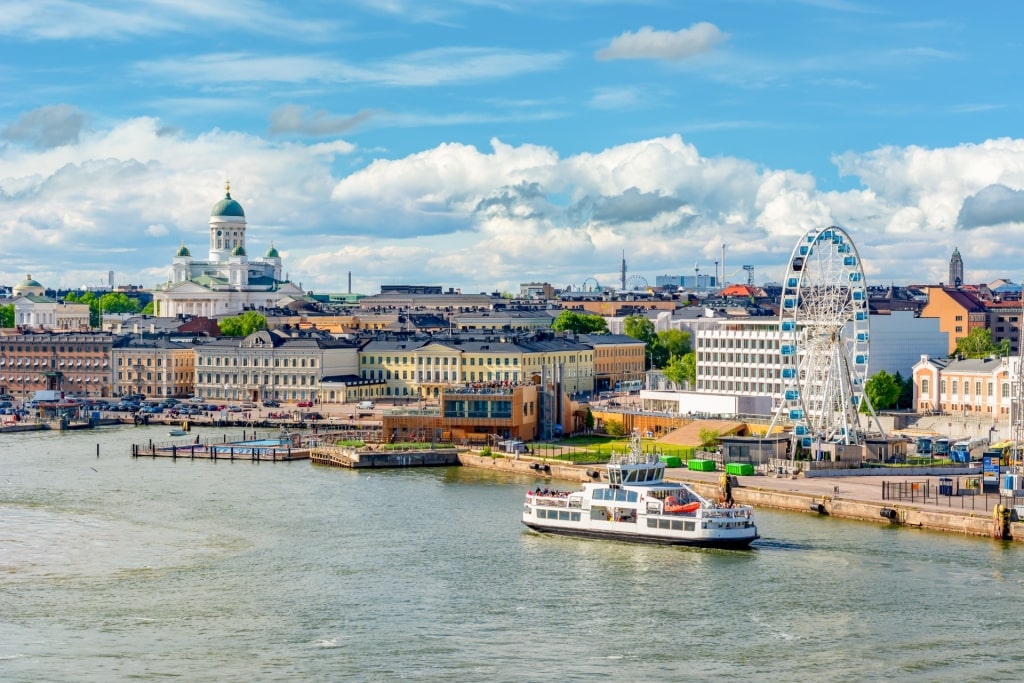
Helsinki
Finland has enough islands to keep you entertained for a lifetime, with the exact number ranging from 50,000 to six figures, depending on the definition; the inclusion of the numerous inner islands found on Finland’s enchanting lakes is a point of debate.
Still, no matter the figure, one thing is certain: these islands are the country’s crown jewels. They’re spread across a handful of archipelagos spanning the Gulfs of Bothnia, Finland, and the Baltic Sea, so you’ll never be far from a water-lapped escape. Even the modern city of Helsinki has more than 300 islands on its coastal doorstep.
To discover this side of what Finland is famous for is as simple as boarding a ferry or boat trip from Helsinki’s Market Square. You’ll soon be gliding alongside wooded islands shrouding summer retreats, rocky islets, and small inhabited groups where close-knit communities reside.
Suomenlinna Maritime Fortress
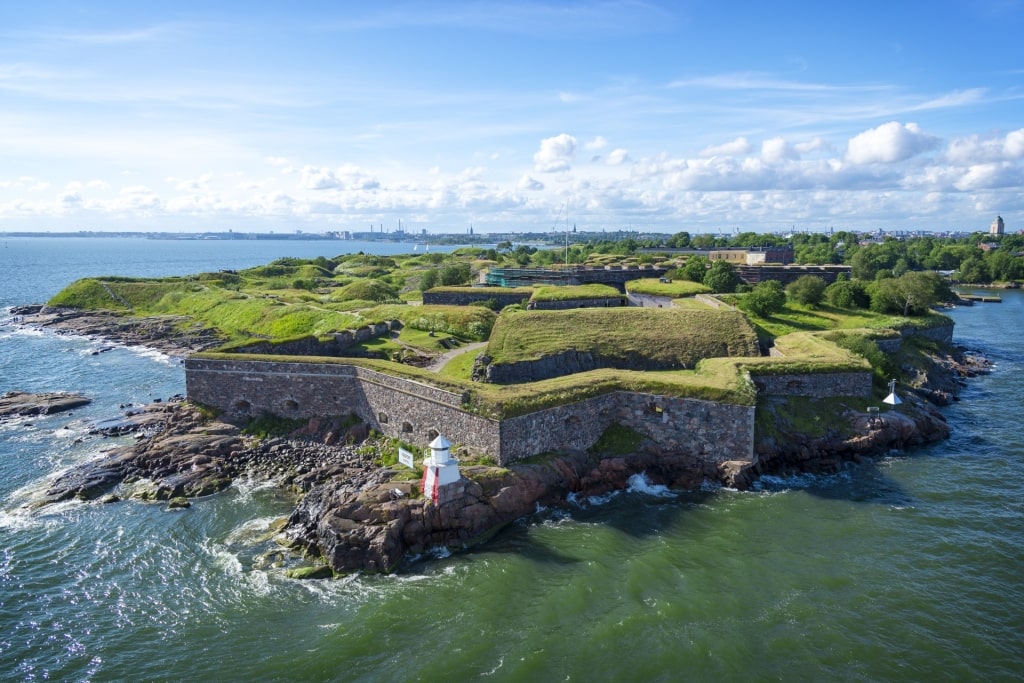
Suomenlinna Maritime Fortress
There’s one clear headliner among Finland’s islands: Suomenlinna Sea Fortress. Not that this massive former maritime fortress is restricted to just one isle; Helsinki’s former maritime defenses span six islands in the Gulf of Finland.
A UNESCO World Heritage Site since 1991, this mid-18th century fortress is one of Finland’s most salient landmarks, quickly reached by a scenic ferry ride from Helsinki. A stroll across the bridge-linked islands that constitute Suomenlinna will shine a spotlight on the nation’s Swedish and Russian-controlled history.
With sandy bays lapped gently lapped by the Baltic Sea, turf-clad bastions, and military relics, and half a dozen museums sharing seafaring stories, it’s little wonder that mighty Suomenlinna has become one of Finland’s most visited attractions.
Pristine National Parks

Sipoonkorpi National Park
The Finns take nature seriously. No matter the season and weather, the great outdoors is always a place to relish. And given that Finland’s famous forests cover nearly 75 percent of the country, including 41 dedicated national parks, it’s hardly surprising.
Given Finland’s size, it’s easy to assume you might have to travel into the depths of Lapland for unadulterated landscapes. However, there’s no need to stray far from Helsinki to experience some of the protected and pristine parks that Finland is famous for.
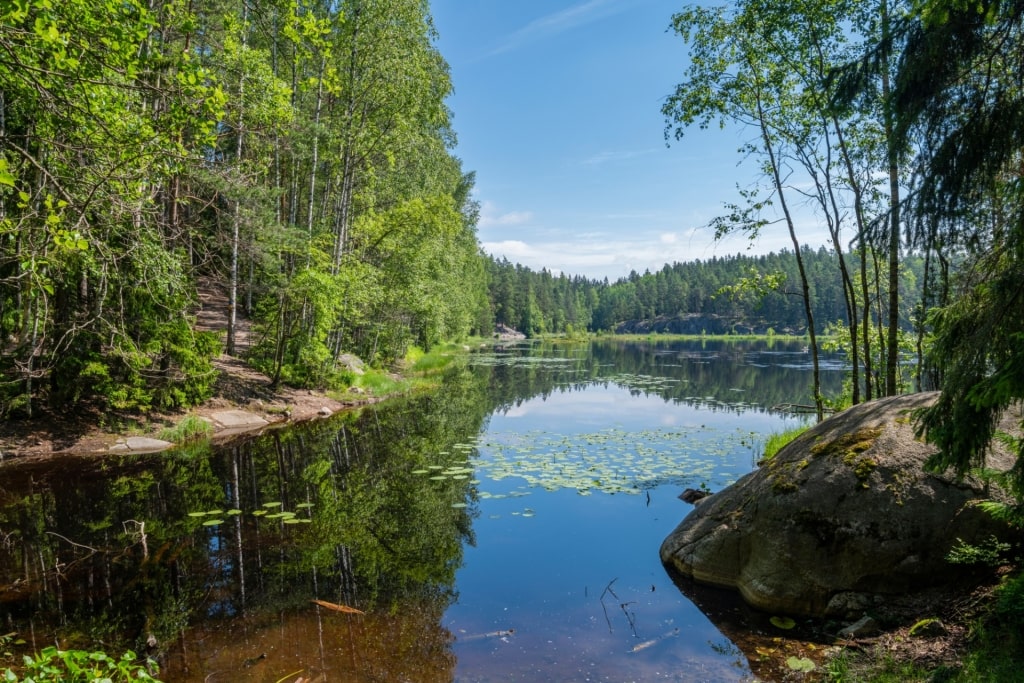
Nuuksio National Park
So, follow the Finnish lead, strap on some hiking boots, and make a beeline for bucolic landscapes. Two of the most accessible forested parks from the capital are Sipoonkorpi and Nuuksio, both under an hour away.
Sipoonkorpi National Park, a wooded haven for endangered species, lynx, and birdlife, is best experienced on the tranquil trails weaving between spruces, bogs, and wildflowers.
Meanwhile, Nuuksio National Park is characterized by mirror-like lakes flanked by ancient forests. You might even spot some of Nuuksio’s residents, such as the threatened flying squirrel or wandering reindeer.
Foraging & Farm-to-Fork Dining
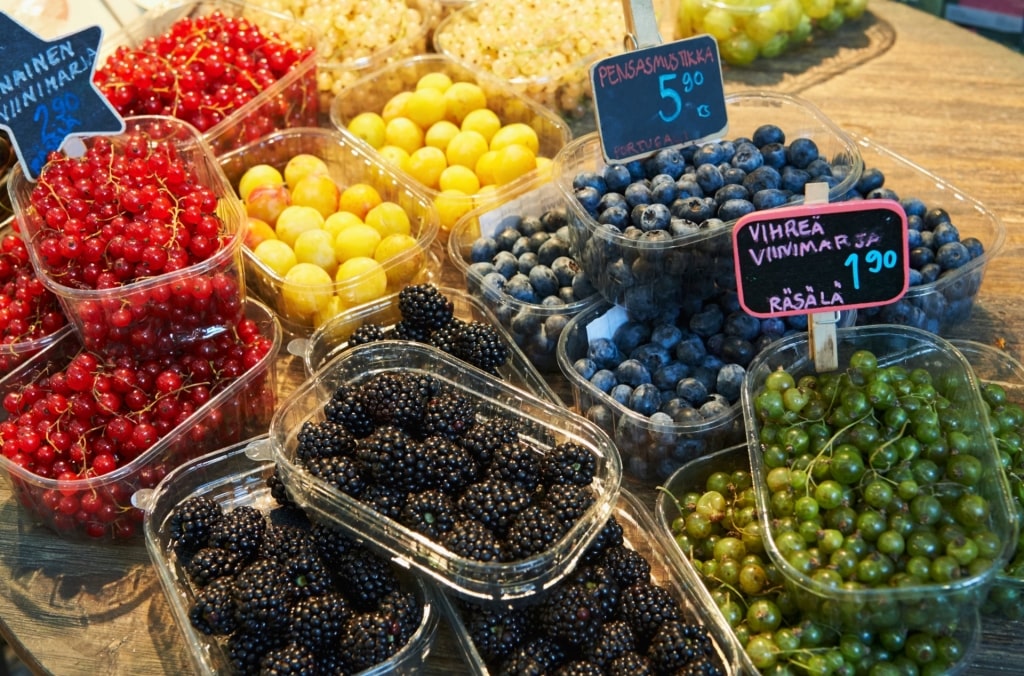
Berries
Mushrooms, lingonberries, cloudberries, or bilberries—no matter the fruits of the labor, the Finns are famed for their love of foraging. Around 60% of the population is estimated to collect their own wild berries thanks to Jokaisenoikeudet, the Finnish right to roam in nature.
While it’s not advised for visitors without well-trained eyes to forage their own food, settling in for a delicious farm-to-fork feast or visiting Helsinki’s Market Square to meet the producers and prepare a picnic is the next best thing.
You’ll also find plenty of berry-laden pastries, such as the almond-based Runeberg Torte topped with raspberry jam, or Mustikkapiirakka (blueberry pie), in nearly every café.
For something more filling, Finland’s famed traditional dishes don’t disappoint. Seafood is flavorsome and fresh, from crowd-pleasing, dill-heavy salmon soups to the pickled Baltic herrings, more of an acquired taste.
Away from the coast, meat is more customary, with Lihapyorykoita (Finnish meatballs) and thinly sliced reindeer considered local delicacies.
Read: European Food Guide
Unique Churches & Chapels
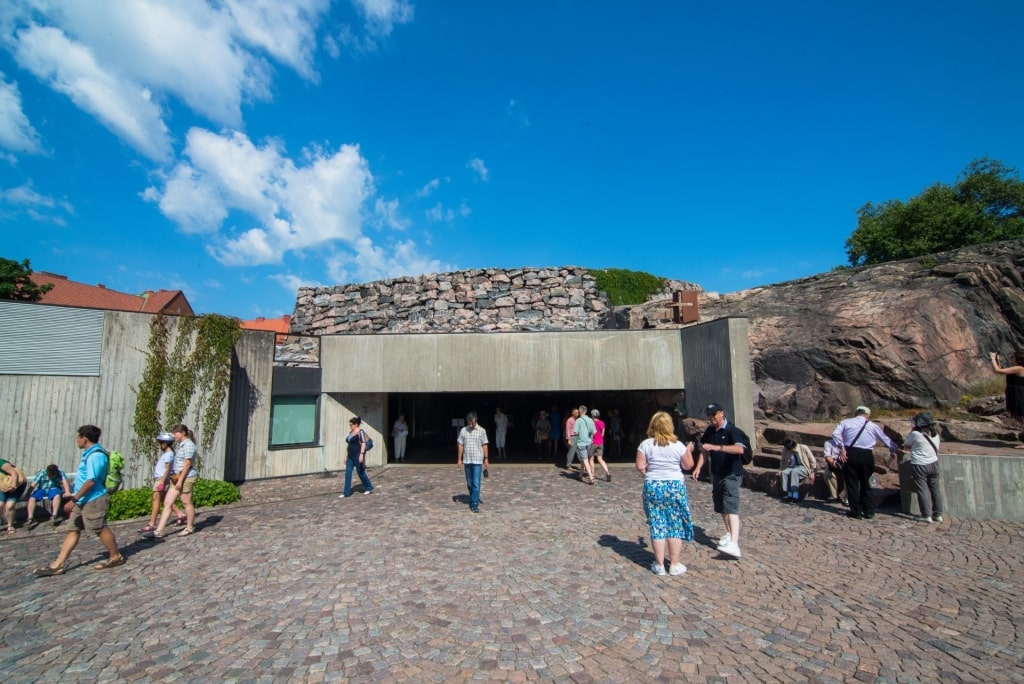
Temppeliaukio Rock Church, Helsinki
The answers to what Finland is known for aren’t solely found in nature. The nation’s architects have risen to the challenge of creating unique edifices and forward-thinking buildings befitting of the bucolic way of life.
This is especially true of Finland’s now iconic contemporary churches, often designed with acoustic considerations for metal and classical concerts alongside prayer.
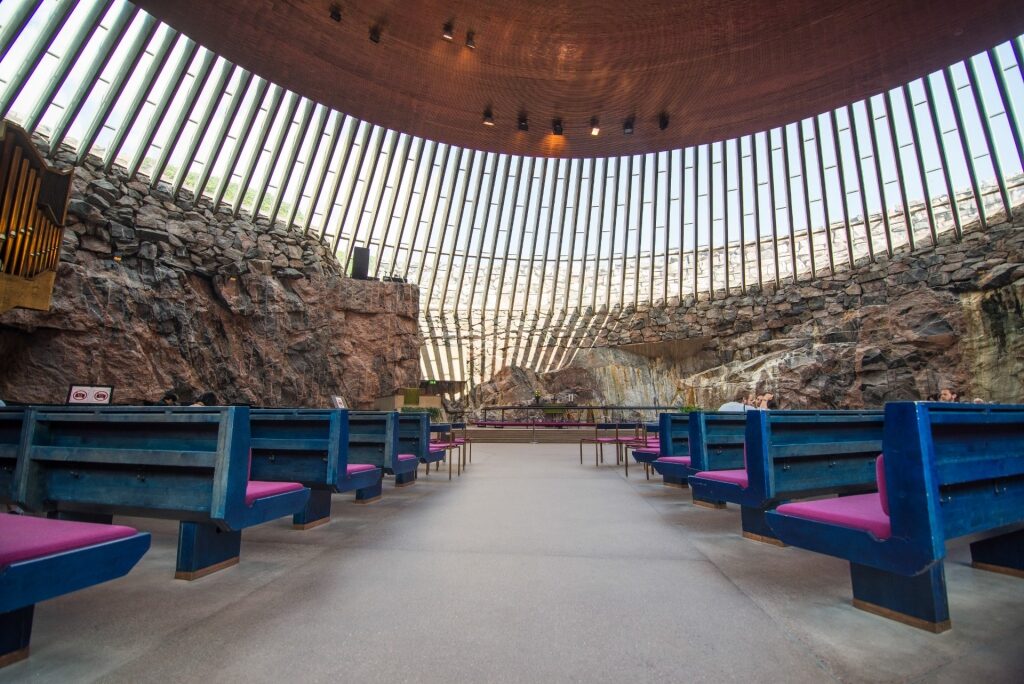
Temppeliaukio Rock Church, Helsinki
The most famed of Finland’s new wave of religious buildings is Helsinki’s Temppeliaukio, also known as the Rock Church. The futuristic design of two brothers, Timo and Tuomo Suomalainen, this spiritual and soulful circular church was carved from bedrock in the city center to make use of natural resources. Topped with a striking copper and glass roof, the unique space opened in 1969 and quickly became one of Finland’s landmark buildings.
More recently, in 2012, the arrival of Kamppi Chapel, winner of the International Architecture Award, added another distinctive non-denominational religious space to Helsinki. Drawing from Finland’s forests, the three types of wood used in the curved construction bring the countryside to the city in the form of a simple yet remarkable chapel of silence.
Design, Creativity, & Culture
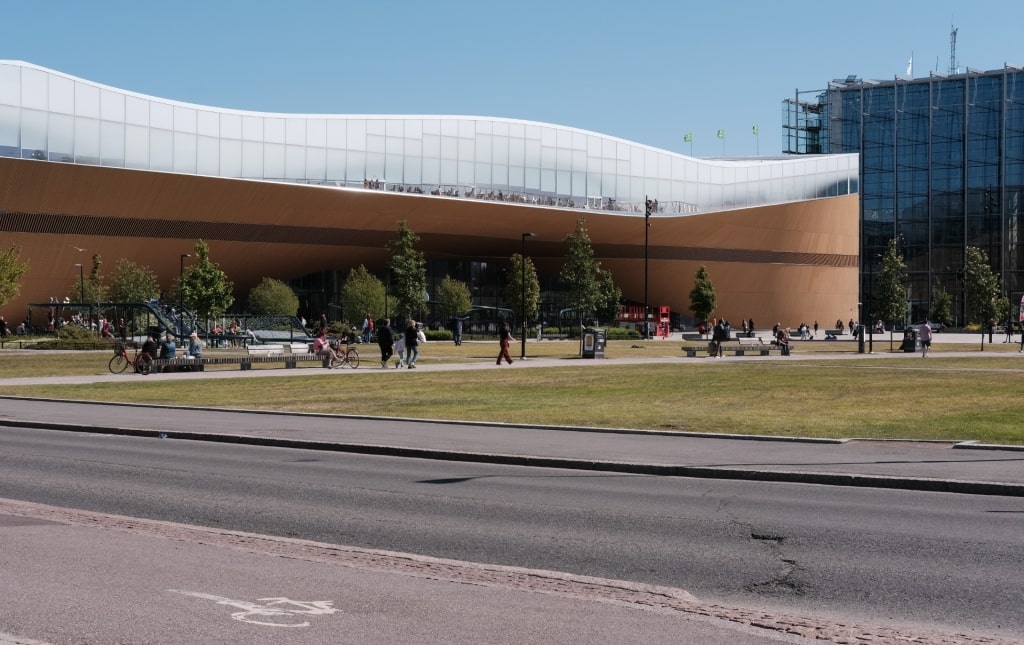
Design Museum, Helsinki
For a relatively small population, Finland’s global contributions in terms of design, art, and ingenuity are numerous, recognized by Helsinki being crowned a UNESCO City of Design in 2014.
From the city’s futuristic Oodi Library, a bright community space of spruce timbers and expansive glass windows, to the Design District, packed with creative boutiques and artisans, Helsinki’s contemporary creative credentials shine.
Technology is another definitive answer to what Finland is known for. Nokia, one of the most popular mobile phone producers in the 1990s, hails from Tampere, Finland’s third-largest city.
One of the best things to do in Helsinki is to visit the Design Museum. Here, you can learn more about the country’s creative contributions in an interactive exhibit spanning glassware and Sami patterns to Angry Birds, one of the biggest video games of all time.

Kiasma Museum of Contemporary Art, Helsinki
Just as revered is Finland’s art scene. While the classics in the Finnish National Gallery’s Ateneum are as captivating as the neo-Renaissance building, it’s the Kiasma Museum of Contemporary Art where you’ll see young Finnish artists shine.
Expect plenty of humor, political commentary, and thought-provoking work as you explore the striking and futuristic space that has firmly cemented Finland on the radar of modern art aficionados.
Saunas
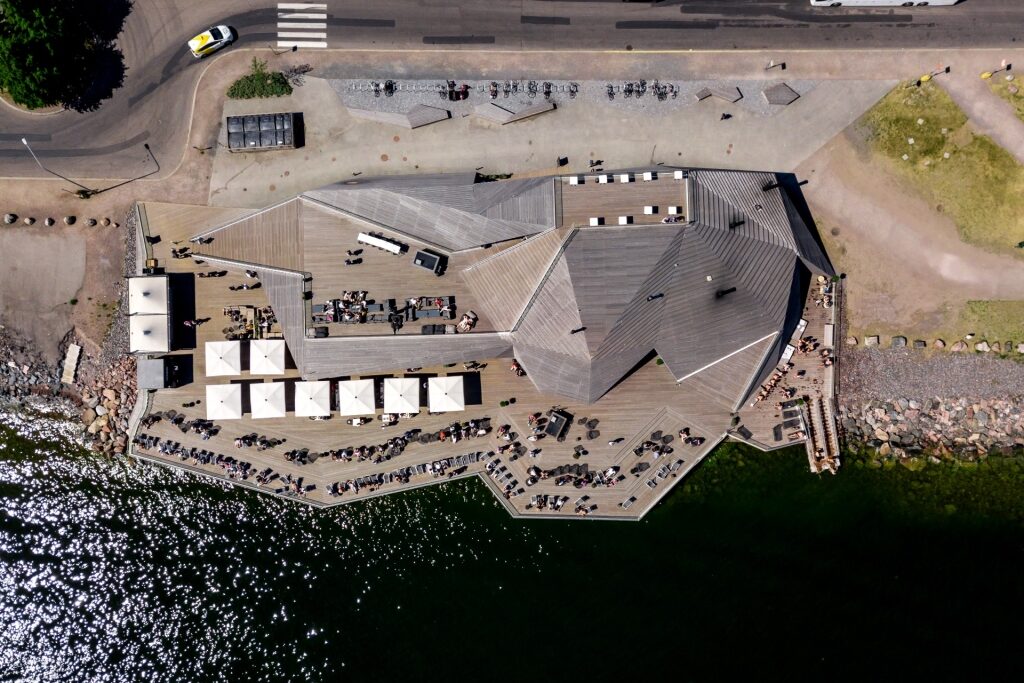
Löyly Helsinki
If there’s one thing that Finland is known for, it’s sauna culture. For over two millennia, the Finns have been bathing, cleansing, and perfecting the art of heart-racing and endorphin-generating hot-and-cold therapy. Estimates place the number of saunas in Finland above three million, making it the country with the most in the world.
It’s also a well-known fact that Finland’s sauna culture involves bathing in your birthday suit. However, swimsuit-requiring options are slowly opening to allow cautious first-timers to partake in this wellness ritual.
Löyly Helsinki is a perfect pick for your initial sauna culture dabble. An architectural feat, the curved and contemporary all-wood building is perched on the waterfront. Couples will particularly appreciate enjoying the typically Finnish experience together in one of the mixed-gender smoke and wood-burning saunas.
Feeling brave? Partake in another popular Finnish pastime at Löyly: taking a plunge into the Baltic Sea between sauna sessions.
Rock Music
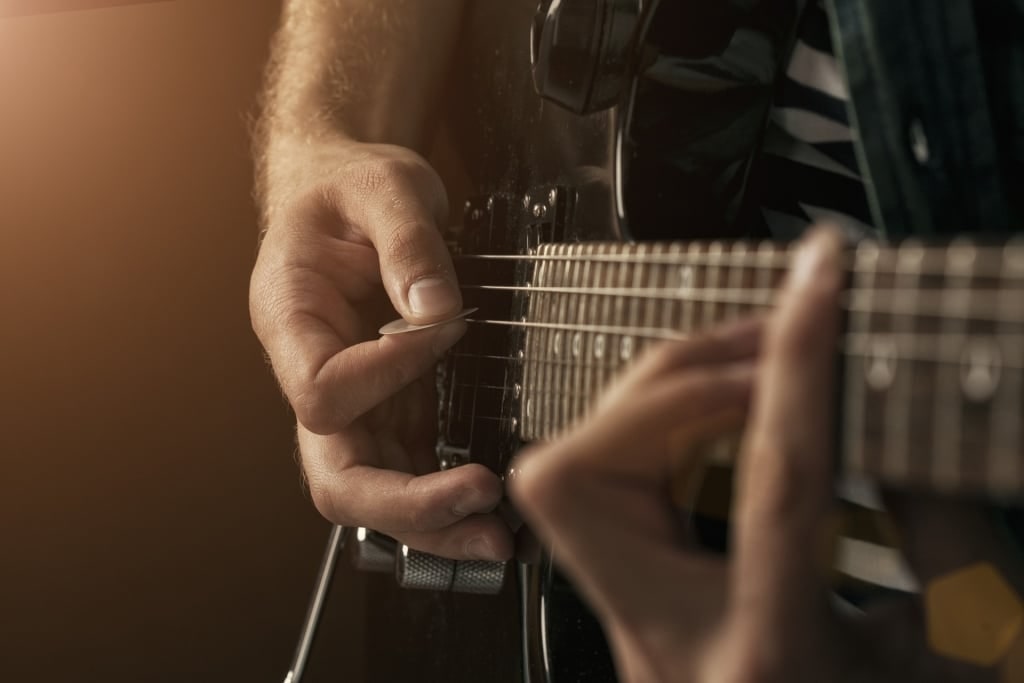
Guitar
Denmark has its legacy classical composers and Sweden rules supreme for its Europop legends, but ask any musician what Finland is known for and they’ll certainly reply with rock music, specifically heavy metal.
With a strong emphasis on musical education in school and an endearing sense of community among fans of home-grown talent, it’s little surprise that rock music has somehow become part of the nation’s DNA.
Catching a local band in concert is absolutely the best way to see how melodic Finland’s heavy metal scene is, especially in the summer months when park performances transform tranquil afternoons into guitar-rocking raves.
Green Cities
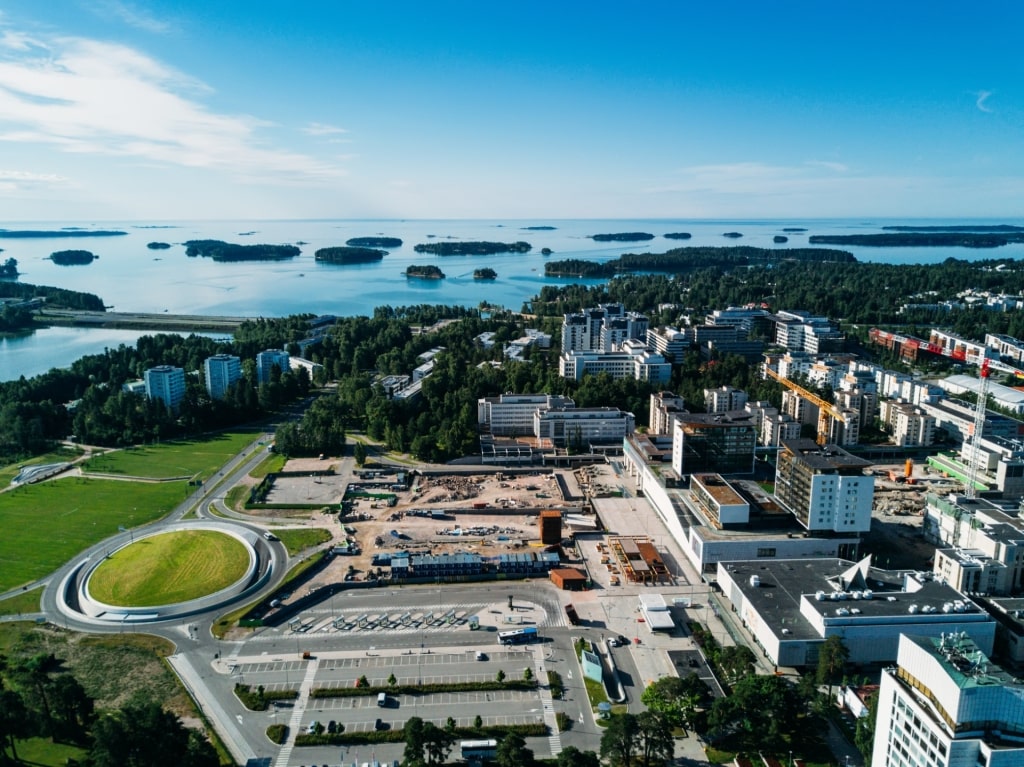
Espoo
Long before sustainability became a buzzword, the Finns ensured their love of nature extended to their urban growth. You’ll find cities across the nation that have put green spaces and easy access to nature at the forefront of their urban planning.
Some of the best green cities that Finland is famous for are found within easy reach of Helsinki. Espoo, Finland’s second city, with its love of wild meadows and butterflies, is less than 30 minutes from the capital city.
Further still, lake-flanked Tampere and tree-coated Turku, best known for its medieval castle, are both reachable in under two hours by equally eco-conscious train travel.
Wooden Villages & Towns

Seurasaari Open-Air Museum, Helsinki
Colorful wooden houses have been part of Finland’s fabric for centuries. These old-school homes, often painted dandelion yellow or crimson, are an iconic part of the Finnish countryside with some of the oldest hamlets and neighborhoods retaining medieval structures.
In fact, some of the most historic wooden buildings have been moved and reconstructed in Helsinki’s Seurasaari Open-Air Museum to protect their heritage for centuries to come. Take a stroll through this island museum and you’ll learn about traditional architecture from north to south while marveling at typical farmsteads, cottages, and a 17th-century church.
Yet far from being relics of the past, these fairytale communities remain commonplace nationwide. A handful of Helsinki’s suburbs, especially the 1920s-constructed Puu-Käpylä district, offer an easy-to-reach look at these log-built homes.
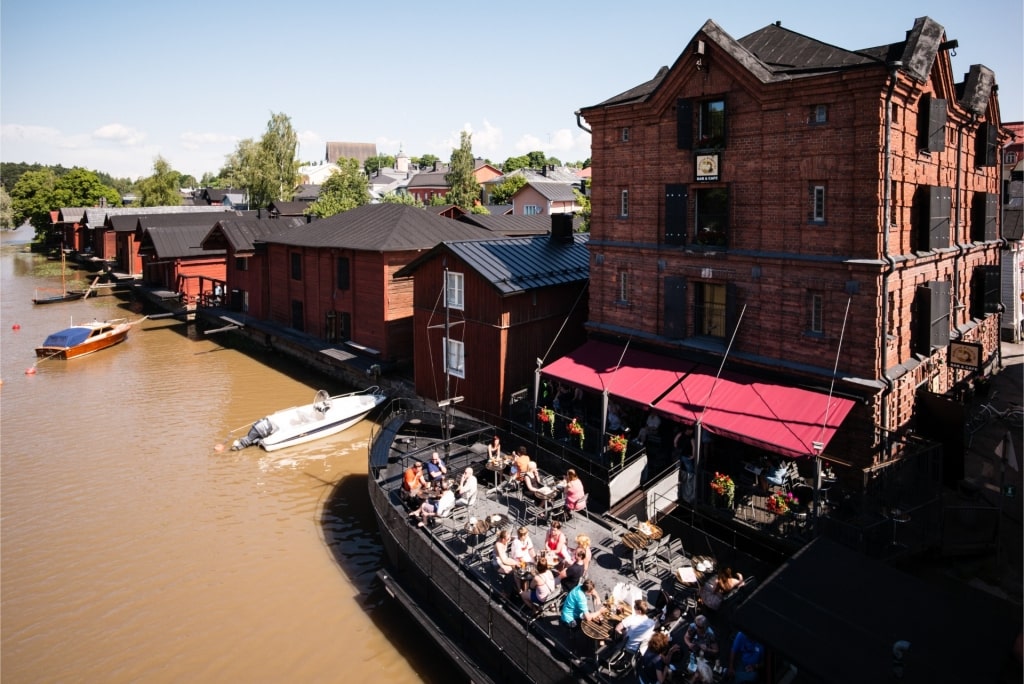
Porvoo
For a more historical look at the wooden villages that Finland is known for, hop on a bus from Helsinki to Porvoo. In under an hour, you’ll be transported to Finland’s second oldest city, home to one of the nation’s best-preserved wooden old towns.
Ambling along the cobbled streets to take in artist-inspiring colorful cottages is charming, especially when viewed from the riverbank of the Porvoonjoki.
Coffee Consumption
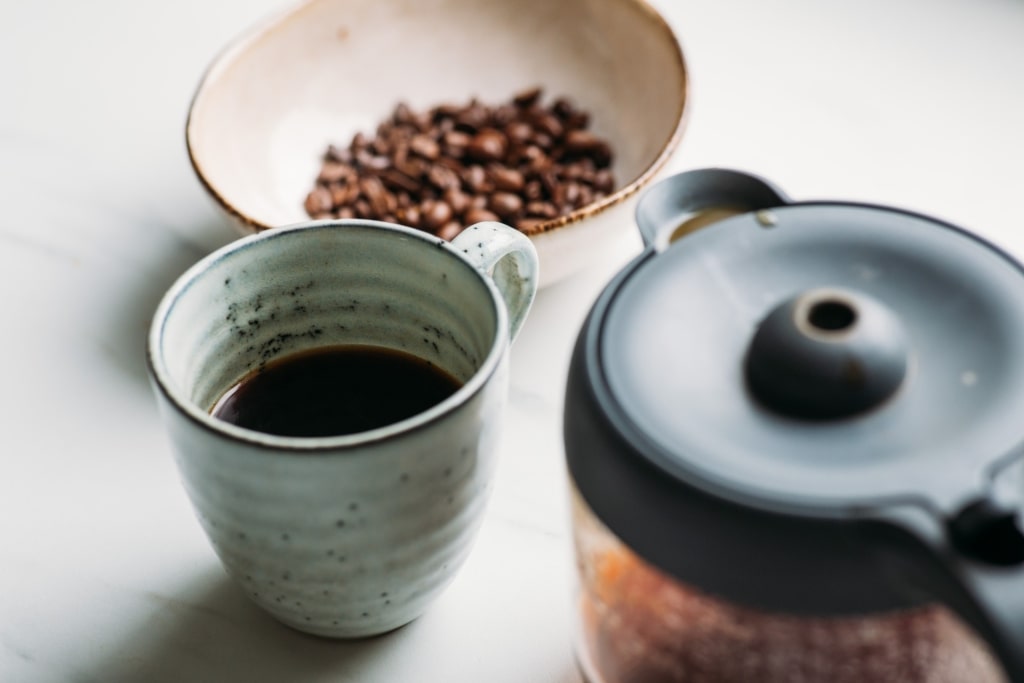
Coffee
The neighboring Nordic nation of Sweden might be famous for fika, the all-important pause for coffee, cake, and conversation, but it’s actually the population of Finland that is known for consuming the most coffee per capita.
Likewise, the Finns also rank as one of the highest nations for milk consumption. So no matter whether your preference is a frothy cappuccino, a ubiquitous drip coffee, or a more refined cup from Finland’s very own Helsinki Coffee Roastery, you’re never far from a cozy coffee house happy to oblige.
Just be sure to follow the local lead and forgo the takeaway cup. Instead, pair your caffeinated pause with a mouth-watering and freshly baked Korvapuusti (cinnamon roll) and you’ll soon see why the Finns have much to smile about.
Reindeer & Wildlife
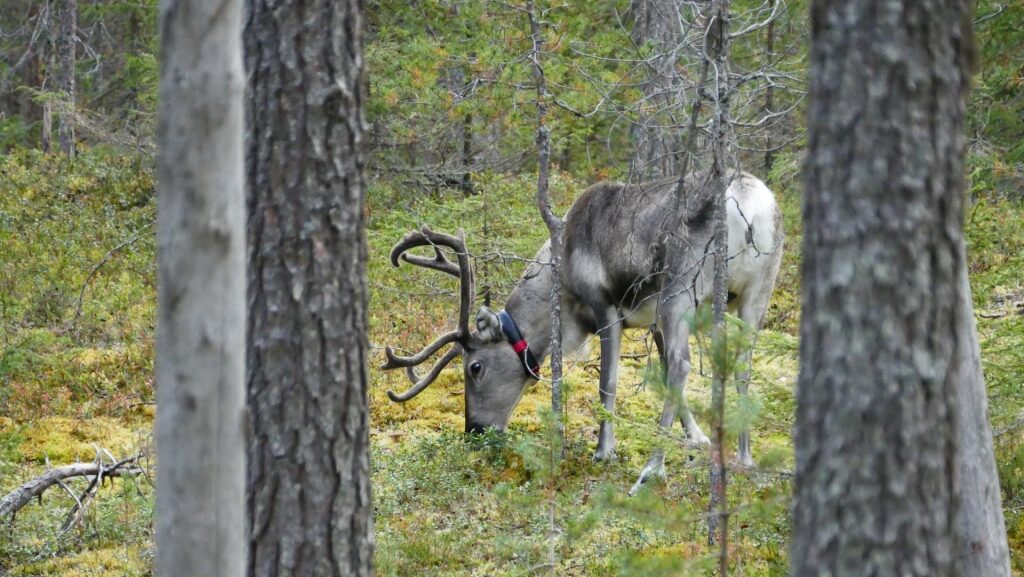
Reindeer
Partly due to Santa’s Lapland village, Finland has become synonymous with reindeer, the antler-sporting, Arctic-native deer. In fact, in the north of the country, the resident population of these storybook animals and Finns are roughly equal, with around 200,000 humans and deer calling the sparsely populated region home.
Thankfully, there’s no need to stray into the wintery depths of the remote north to catch sight of the animals that Finland is famous for. The Nuuksio Reindeer Park, which is found in the national park of the same name, is only 30 minutes from Helsinki.
Since 2013, this protected area has been home to reindeer being relocated from the north, including white reindeer who struggle to survive in the wild.
Open year-round and not restricted by the snow storms or inclement weather of northern Finland, it’s a serene setting to spot reindeer, whether hiking through the forest or meeting and feeding the animals with one of the care-providing herders.
Midsummer Celebrations
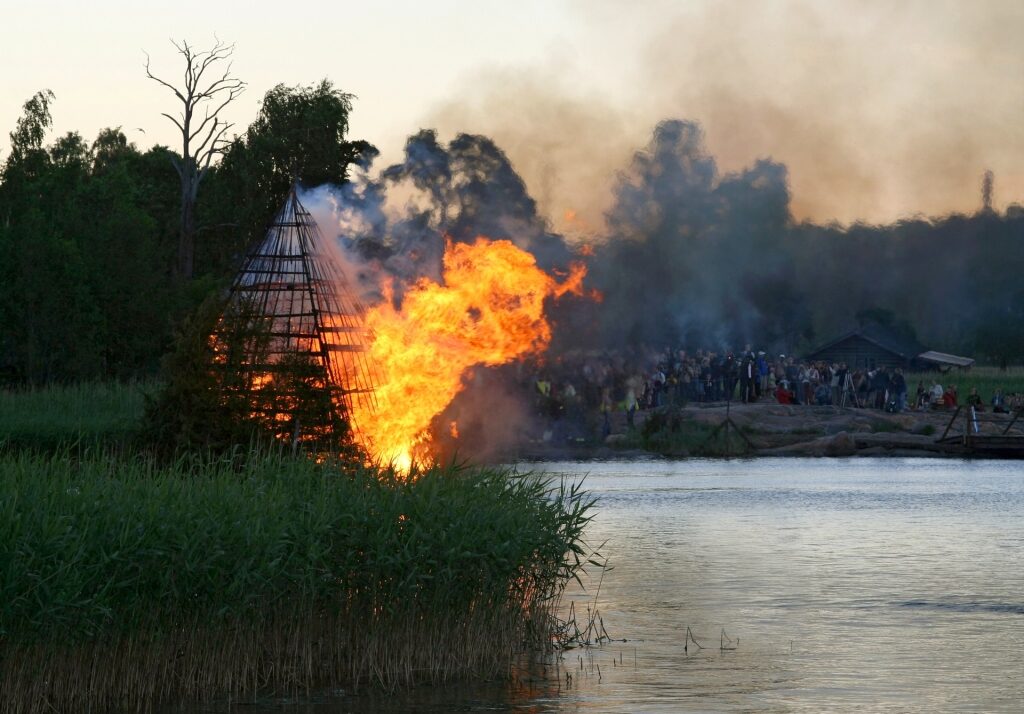
Midsummer celebration in Finland
Ask fans of chilly winter nights and snow-stacked landscapes what is Finland known for and they’re certain to mention the Northern Lights. Yet this Nordic nation is as uniformly celebrated for its joyful summers and midnight sun.
While the white nights phenomenon is most prolific in the Arctic, even Finland’s south sees nearly 24 hours of daylight in June and July.
For this reason, many would argue that visiting Finland in summer is even more magical than winter; there’s a whole new lease of life as everyone flocks to beaches and forests, or enjoys naturally lit evening concerts and festivities.
Midsummer, Finland’s most important national holiday in honor of the summer solstice, is the seasonal calendar highlight. Bonfires, boats, folklore, traditional dances, and a fair few drinks are all essential ingredients for the perfect Midsummer celebration.
Even if you miss the main event, visiting in June and July will afford you an insight into Finnish life at its most carefree, with the al fresco lifestyle and longer days ideal for maximizing your time in this Nordic nation.
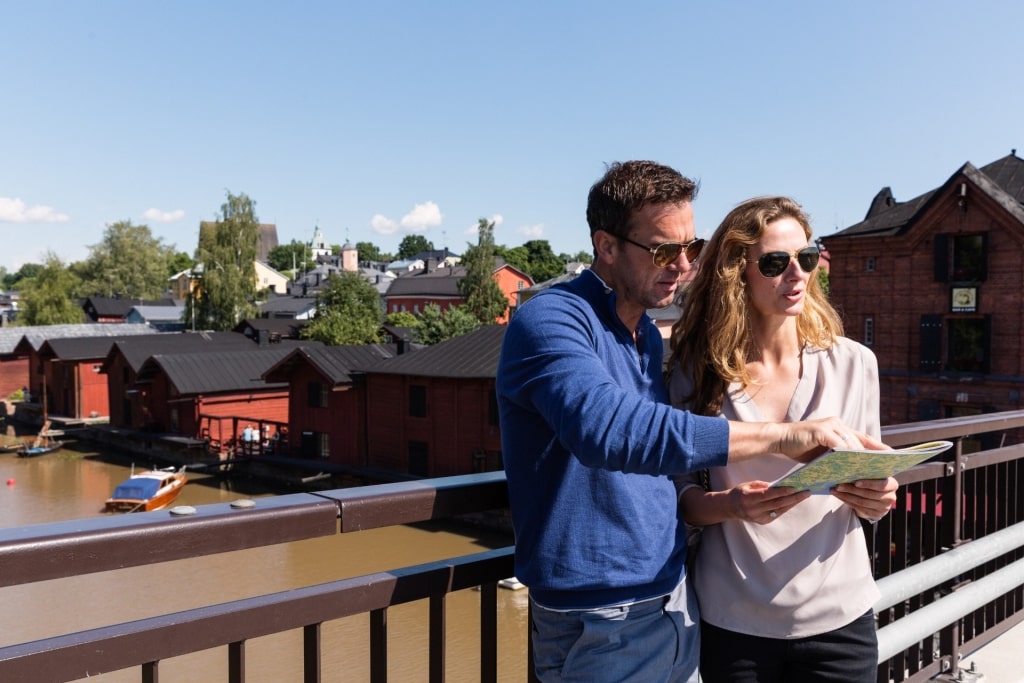
Porvoo
Fascinated by Finland’s countryside, culture, creativity, and cuisine? Browse Celebrity’s Finland cruises to start planning an unforgettable Nordic vacation.
